5. W hich structure is present in the right ventricle of the sheep's heart, but not in the left ventricle? Make a labeled sketch of cardiac muscle as you observed it under the microscope. Label the nucleus, intercalated discs, sarcolemma, and striations. 6. Cardiac Muscle Magnification: 7. Identify two differences between the structure of cardiac muscle tissue and skeletal muscle tissue Cardiac muscle tissue Skeletal muscle tissue
5. W hich structure is present in the right ventricle of the sheep's heart, but not in the left ventricle? Make a labeled sketch of cardiac muscle as you observed it under the microscope. Label the nucleus, intercalated discs, sarcolemma, and striations. 6. Cardiac Muscle Magnification: 7. Identify two differences between the structure of cardiac muscle tissue and skeletal muscle tissue Cardiac muscle tissue Skeletal muscle tissue
Human Anatomy & Physiology (11th Edition)
11th Edition
ISBN:9780134580999
Author:Elaine N. Marieb, Katja N. Hoehn
Publisher:Elaine N. Marieb, Katja N. Hoehn
Chapter1: The Human Body: An Orientation
Section: Chapter Questions
Problem 1RQ: The correct sequence of levels forming the structural hierarchy is A. (a) organ, organ system,...
Related questions
Question

Transcribed Image Text:5. W
hich structure is present in the right ventricle of the sheep's heart, but not in the left ventricle?
Make a labeled sketch of cardiac muscle as you observed it under the microscope. Label the
nucleus, intercalated discs, sarcolemma, and striations.
6.
Cardiac Muscle
Magnification:
7.
Identify two differences between the structure of cardiac muscle tissue and skeletal muscle tissue
Cardiac muscle tissue
Skeletal muscle tissue
Expert Solution
This question has been solved!
Explore an expertly crafted, step-by-step solution for a thorough understanding of key concepts.
This is a popular solution!
Trending now
This is a popular solution!
Step by step
Solved in 4 steps

Recommended textbooks for you

Human Anatomy & Physiology (11th Edition)
Biology
ISBN:
9780134580999
Author:
Elaine N. Marieb, Katja N. Hoehn
Publisher:
PEARSON
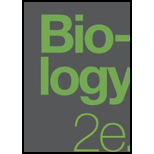
Biology 2e
Biology
ISBN:
9781947172517
Author:
Matthew Douglas, Jung Choi, Mary Ann Clark
Publisher:
OpenStax
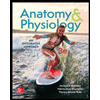
Anatomy & Physiology
Biology
ISBN:
9781259398629
Author:
McKinley, Michael P., O'loughlin, Valerie Dean, Bidle, Theresa Stouter
Publisher:
Mcgraw Hill Education,

Human Anatomy & Physiology (11th Edition)
Biology
ISBN:
9780134580999
Author:
Elaine N. Marieb, Katja N. Hoehn
Publisher:
PEARSON

Biology 2e
Biology
ISBN:
9781947172517
Author:
Matthew Douglas, Jung Choi, Mary Ann Clark
Publisher:
OpenStax

Anatomy & Physiology
Biology
ISBN:
9781259398629
Author:
McKinley, Michael P., O'loughlin, Valerie Dean, Bidle, Theresa Stouter
Publisher:
Mcgraw Hill Education,
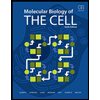
Molecular Biology of the Cell (Sixth Edition)
Biology
ISBN:
9780815344322
Author:
Bruce Alberts, Alexander D. Johnson, Julian Lewis, David Morgan, Martin Raff, Keith Roberts, Peter Walter
Publisher:
W. W. Norton & Company
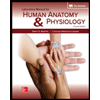
Laboratory Manual For Human Anatomy & Physiology
Biology
ISBN:
9781260159363
Author:
Martin, Terry R., Prentice-craver, Cynthia
Publisher:
McGraw-Hill Publishing Co.
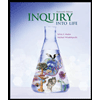
Inquiry Into Life (16th Edition)
Biology
ISBN:
9781260231700
Author:
Sylvia S. Mader, Michael Windelspecht
Publisher:
McGraw Hill Education